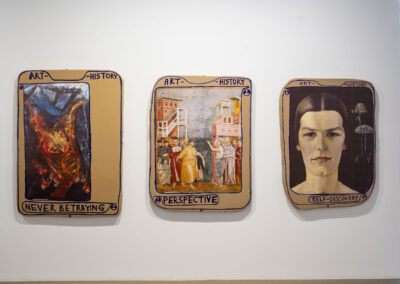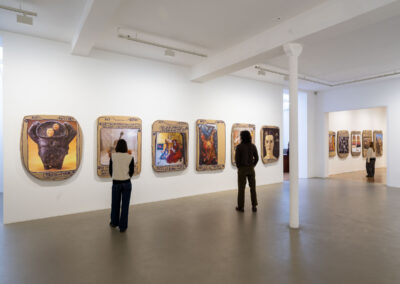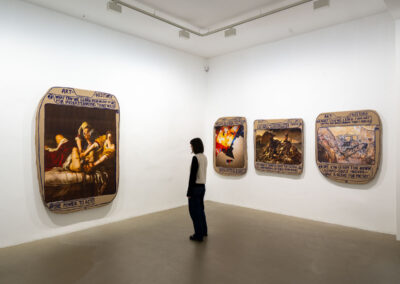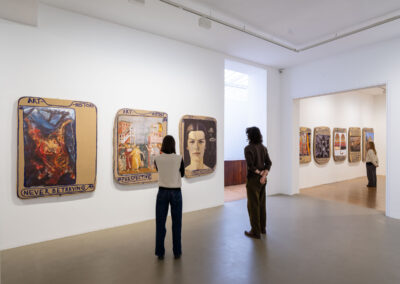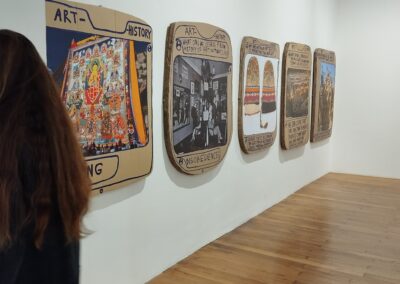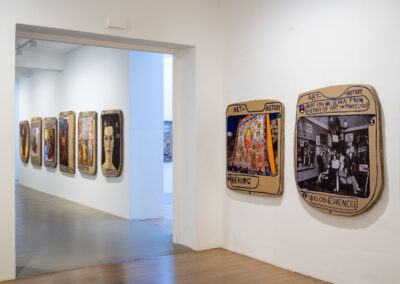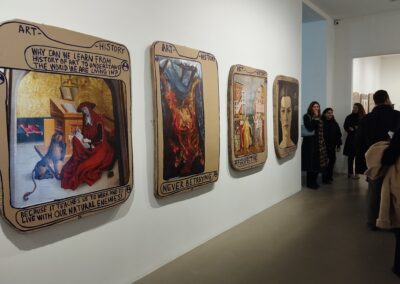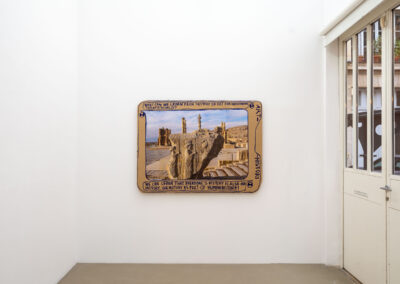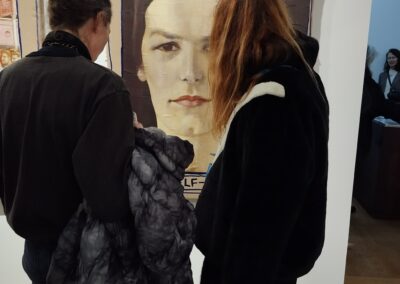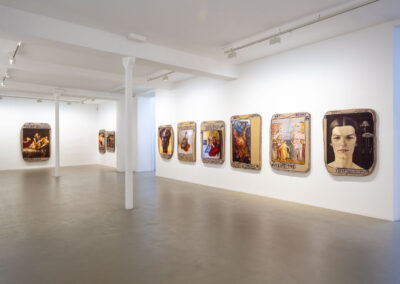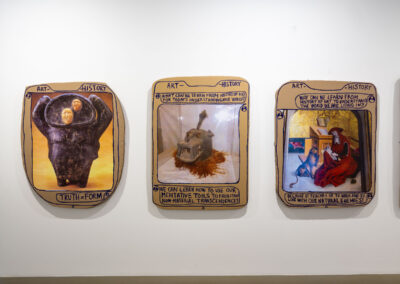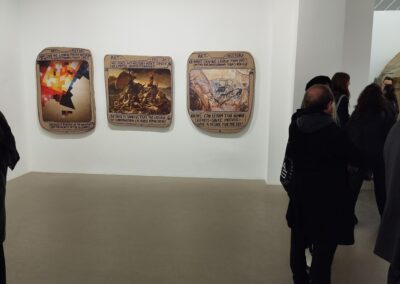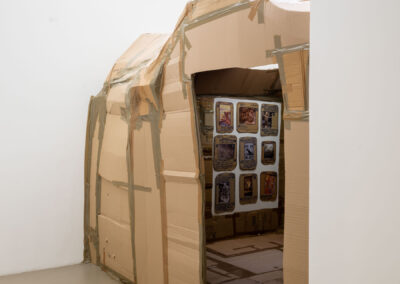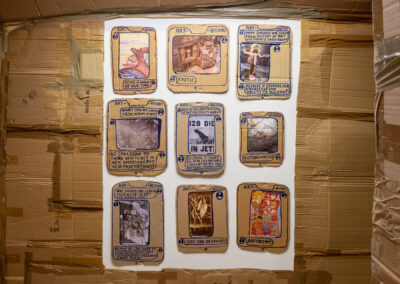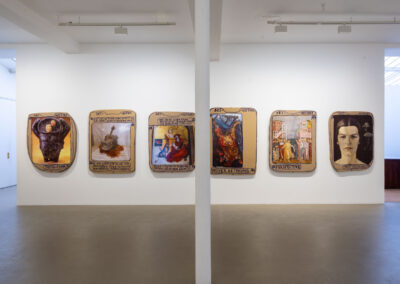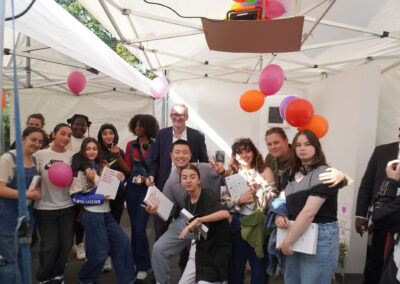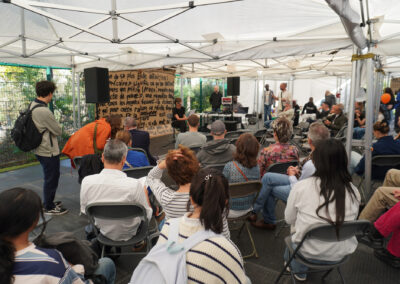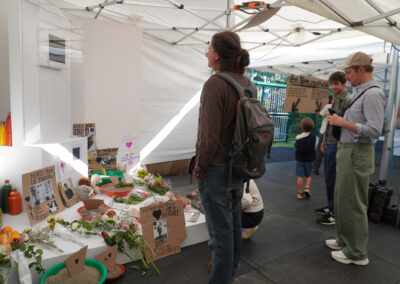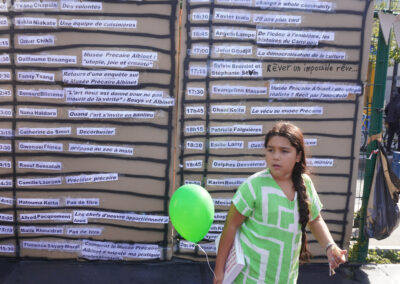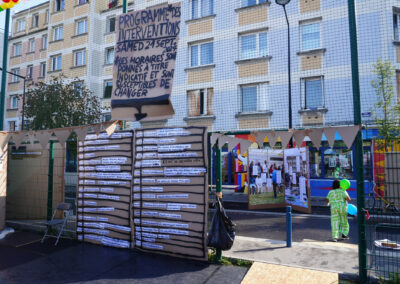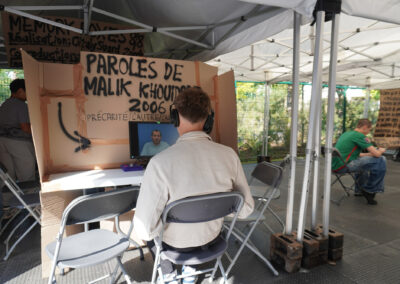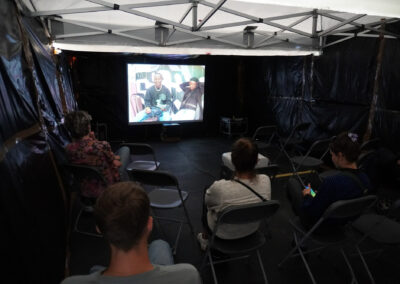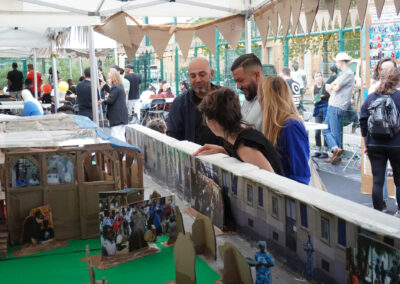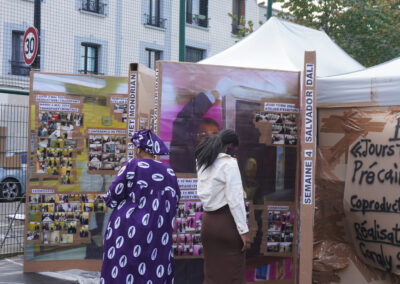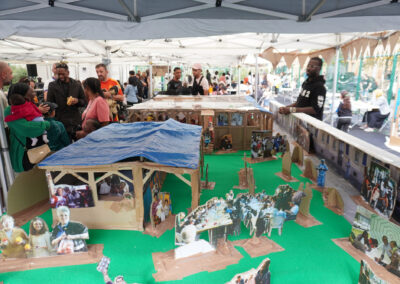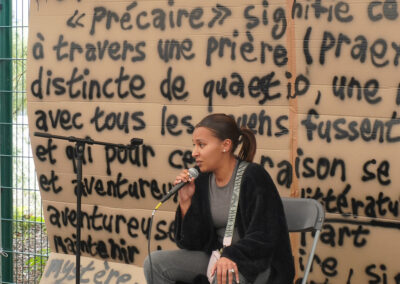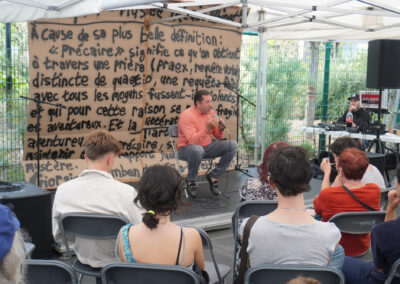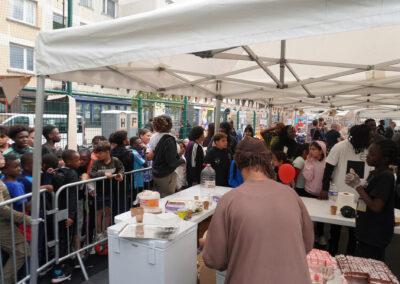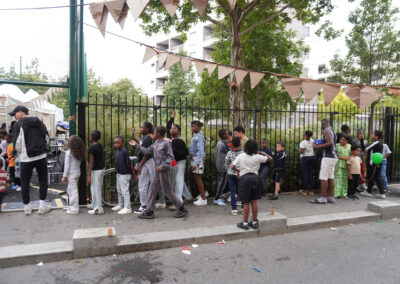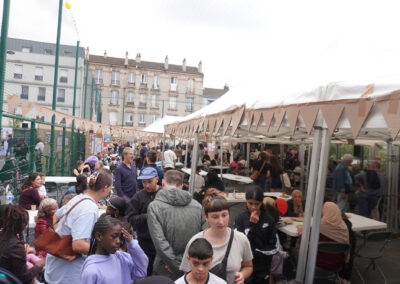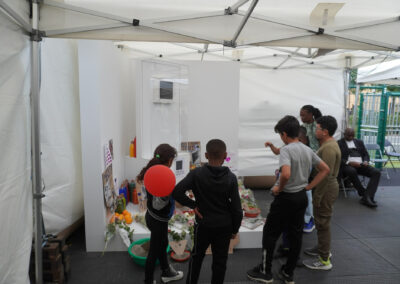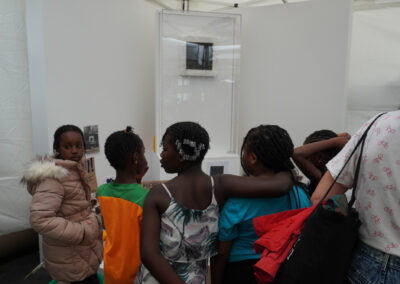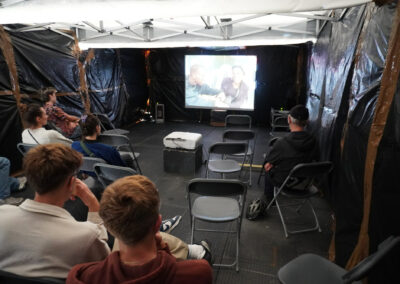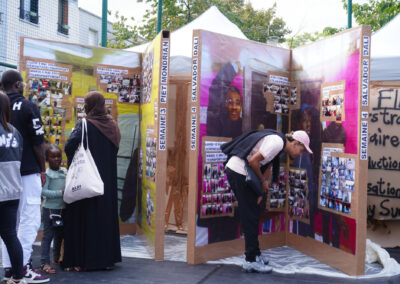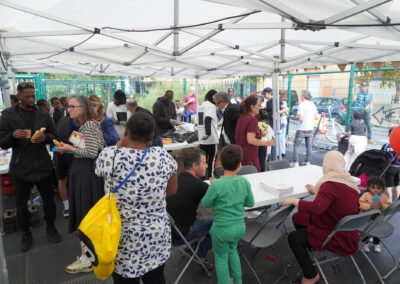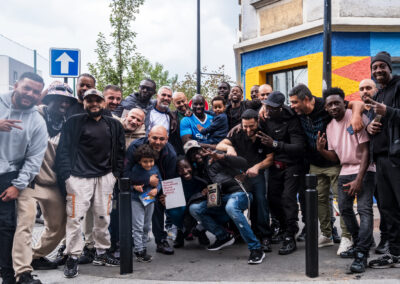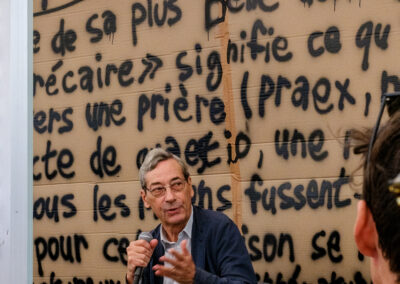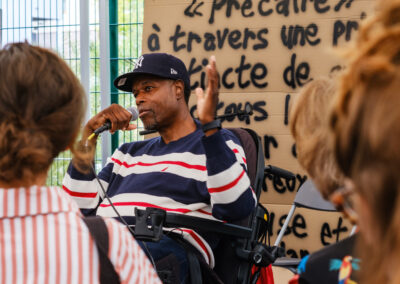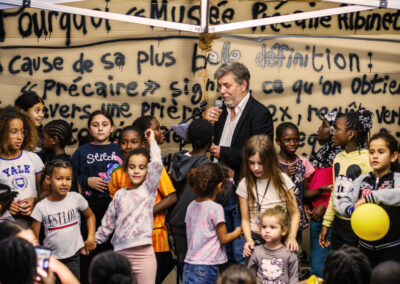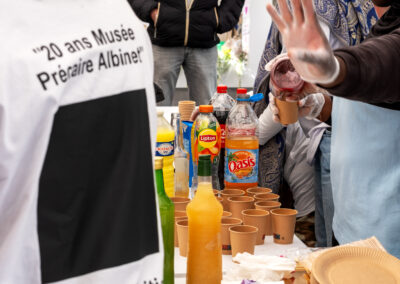CURRENTLY EXHIBITED WORKS:
-
Art-History-Plaque series (2024) and Tutorial (2024), Galerie Chantal Crousel, Paris (France)
-
Power Tools (2007), Dancing Philosophy (4 videos, 2007) and Equality Series, (works on paper, 2002) Helga de Alvear Museum, Cáceres (Spain)
-
Works from the Florian Peters-Messer Collection, Kunstpalast Düsseldorf (Germany)
-
Break-Through III (2013), Museion Bolzano (Italy)
-
Ecrits de Londres (Chat-Poster) and Letter to Joë (Chat-Poster), (2020), Musée des Arts Décoratif, Paris (France)
-
Buffet (1995), Kunstmuseum Bern (Switzerland)
-
Edition “Robert Walser-Cintre” (2024), Edition VFO, Zürich (Switzerland)
-
Work on paper, Ruby City, San Antonio, TX (USA)

“LAST CHANCE: What can we learn from History of Art, for today’s understanding?”
Exhibition on view at Galerie Chantal Crousel, Paris, November 23, 2024 – January 18, 2025
It seems—facing today’s wars in Ukraine, Russia, Palestine, Israel, Lebanon, Iran, among others—that we are not able to learn from History. Every day’s new deaths, injuries, destructions and ruins show us with cruelty that we are not able or unwilling to learn and draw the consequences of the past. Politicians, historians can’t or don’t want to help us understand our present times in order to change things.
Reflecting upon this—I, as an artist—want to assert the postulate that, if ‘Big History’, political, geographical, economical, cultural History can’t teach us, we must learn from History of Art—as our LAST CHANCE. The affirmation is therefore: History of Art must teach us to understand the world we are living in today. History of Art is what can teach us to push and drive our minds beyond borders and conventions. History of Art is what can create links between what does not seem connected today. This is the aim of “What can we learn from History of Art for today’s understanding?” and I want to show why History of Art can help us.
The form of this work is given with “Art-History-Plaques”—a series inspired by the “Post” aesthetic as the ones I have been publishing on Instagram—and by the kind of selfmanufactured military plaques, often made to ‘unofficially’ celebrate someone’s service and accomplishments. But instead of wood and metal used for military plaques, the “Art-History-Plaques” are made with thickly layered cardboard and photocopies. This plaque-gesture wants to emphasize the importance of belief in History of Art for learning and understanding – far from intimidating those who don’t relate to militaria or from establishing a bourgeois hierarchy. Because I believe in the power of Art, which makes a universal and timeless breakthrough in the habits of daily facts commentary. This breakthrough – thanks to Art – can be the key for a real understanding and a true learning of what goes on in today’s world, and as a result, drive us to act consequently.
Therefore, the plaque’s thickness and its stature are important because they stand for this belief and give it a body. The plaque also builds a bridge between the past of Art History and the present of doing art, and wants to be a ‘permanent’ reminder of Art History’s significance.
The work “Art-History-Plaque” wants to hold a distinct position in the present time and prepares for the coming. This works shows—shows and doesn’t write or talk—the universal power of Art: to create, to include, to activate, to dare, to advance, to understand, to take position, to imagine, to progress, to produce, to give form. Can we learn and catch our LAST CHANCE?

